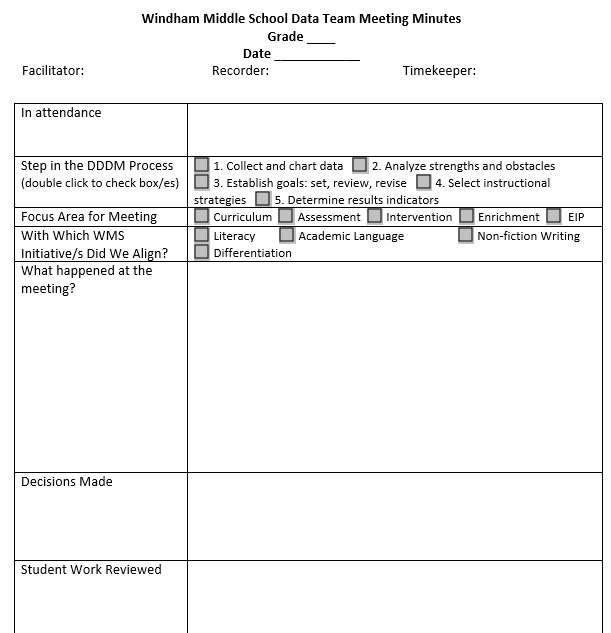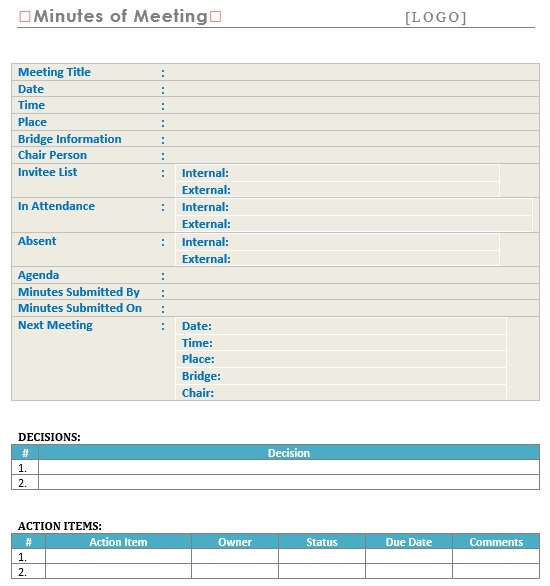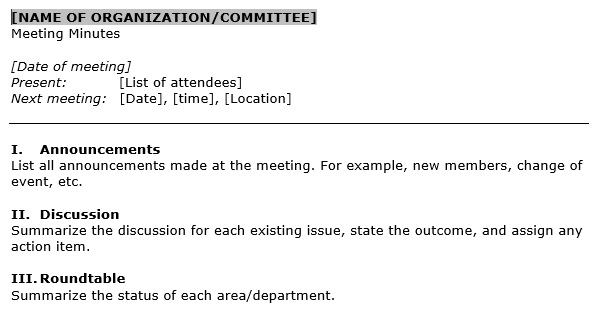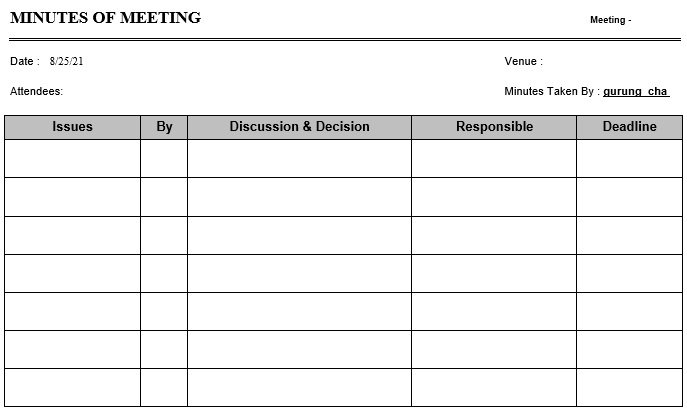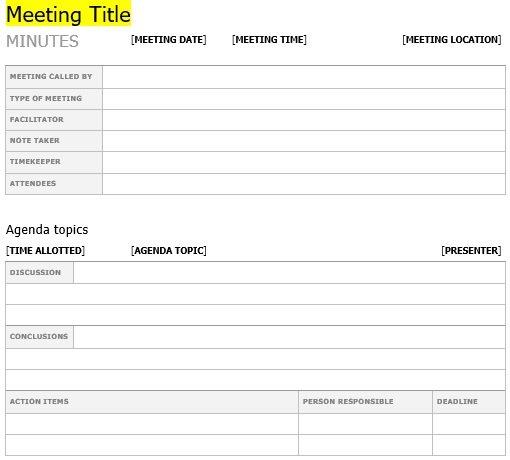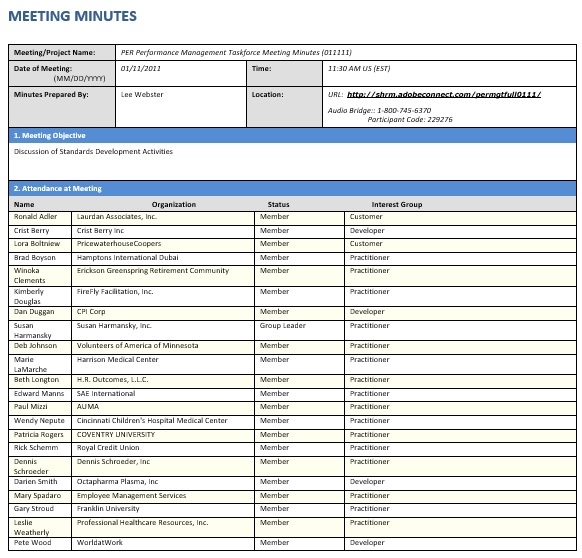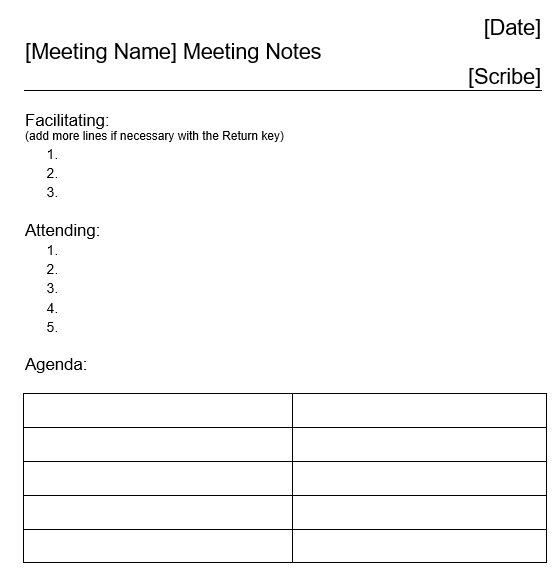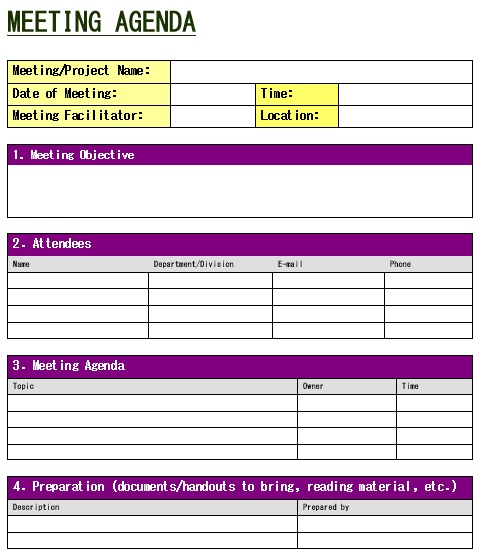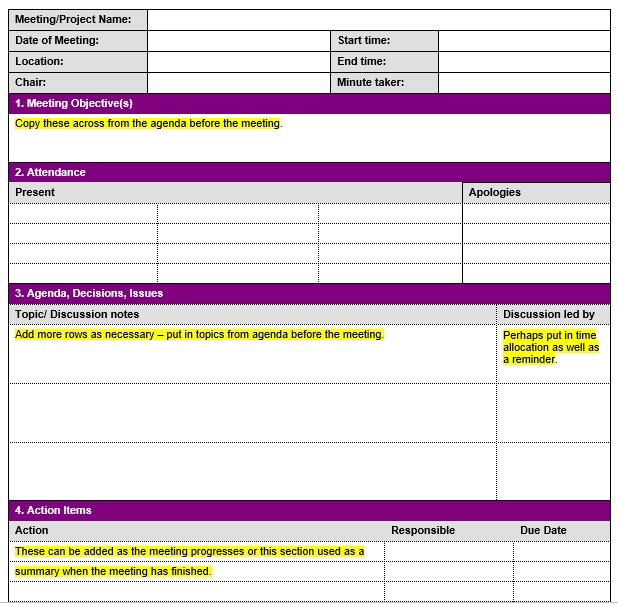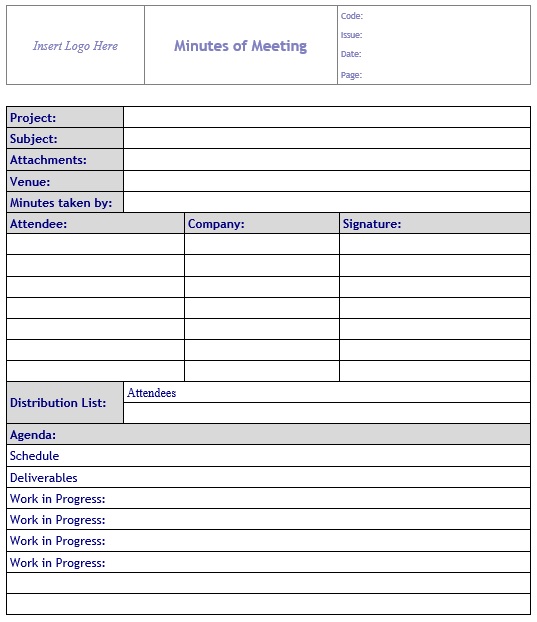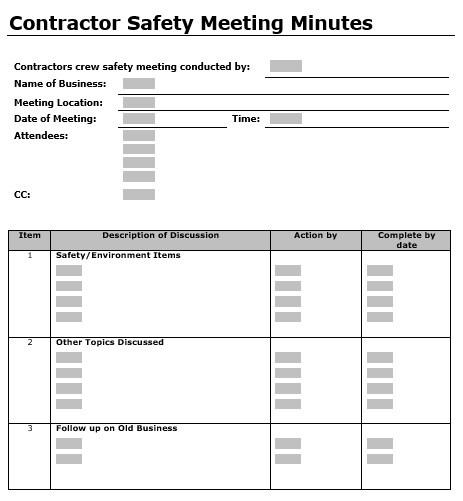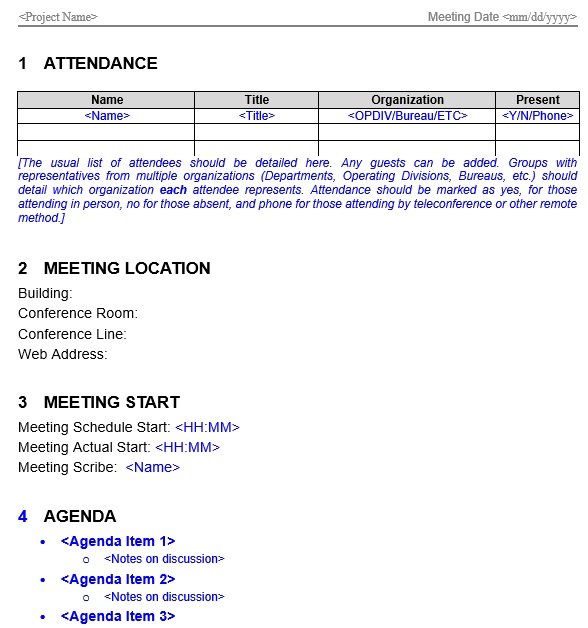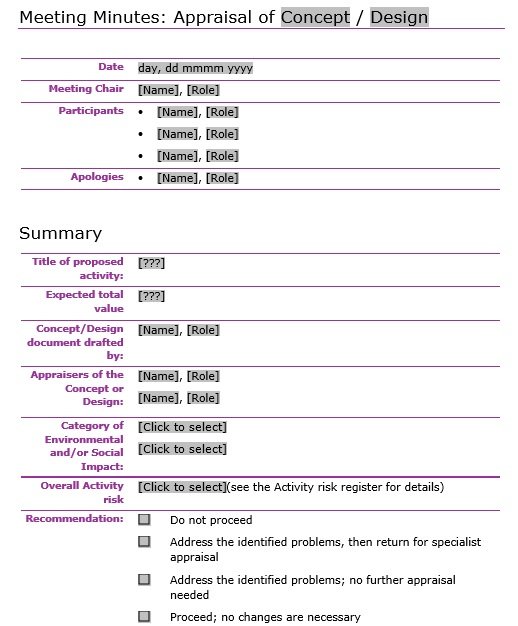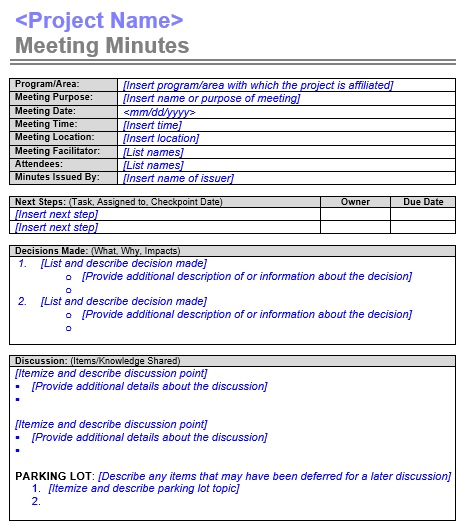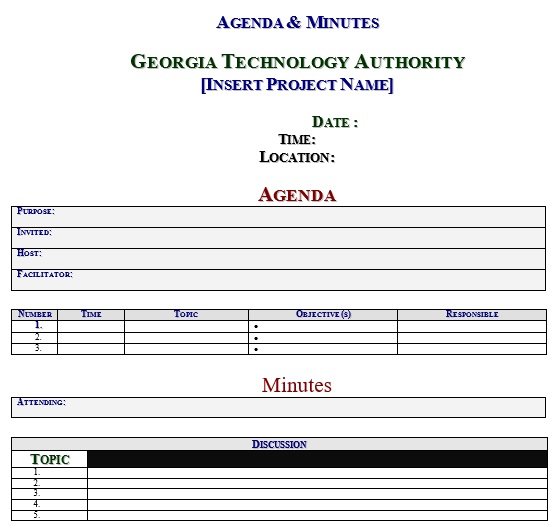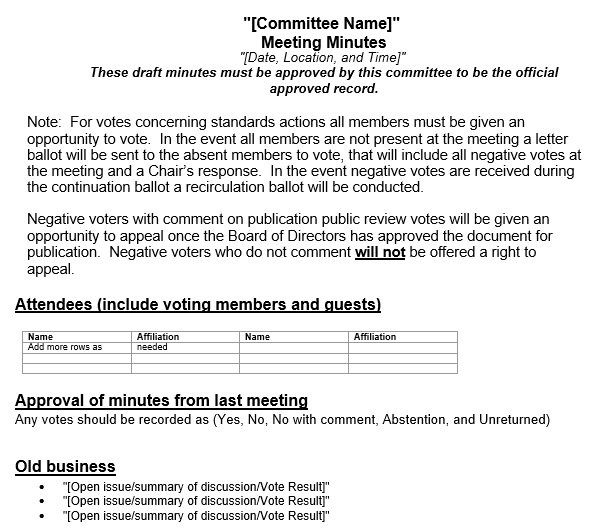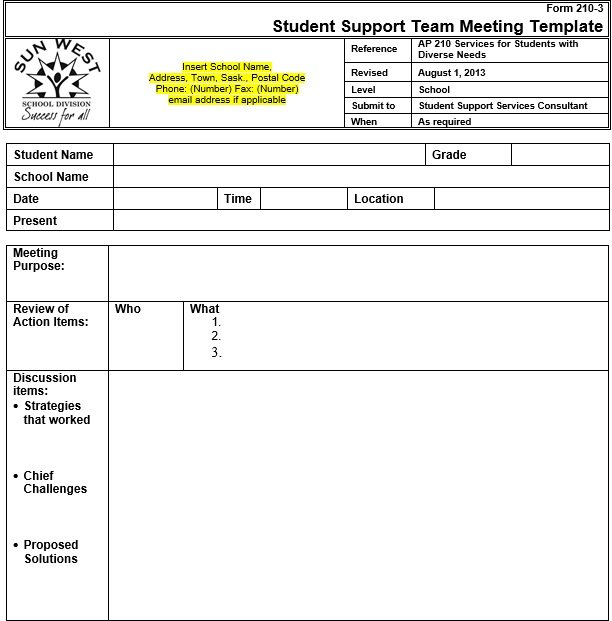A meeting minutes template is a document that helps the note takers to capture all the important details in the exact format. It contains different sections like a presenter, discussion, conclusions, action items, owners, and deadlines. With the help of this document, you can stay on track and pay more attention to meeting content and flow. It keeps employees up to date on the latest news whether they were present at the meeting or not.
Moreover, if you have to take minutes you don’t need to be so worked up about this, you just have to download meeting minutes templates from bestcollections.org. Whether it is an official or informal meeting, these templates simplify the whole process.
Table of Contents
- 1 Different types of meeting minutes templates:
- 2 What are the uses of meeting minutes?
- 3 How to keep meeting minutes using the Robert’s Rule?
- 4 How to effectively write meeting minutes?
- 5 Some tips for writing meeting minutes:
- 6 Annual meetings and convention meetings:
- 7 The advantages of no-agenda style of meeting minutes:
- 8 Conclusion:
- 9 Faqs (Frequently Asked Questions)
Different types of meeting minutes templates:
Depending on the type of meeting to be held, the meeting minutes template is categorized into three types;
The formal meeting minutes template:
This template has been designed according to the 11th edition of the Robert’s Rules of Order. It is mostly used in controlling the interactions of members of parliamentary organizations. It is the easiest way of including all the key information. Also, this information should be preserved in each minute that is held.
The basic meeting minutes template:
It is a quite useful tool that serves as a guide on how to take minutes for an informal meeting. It contains all the rules that are applied to a formal meeting. This template is so well-formatted that you can easily customize it to meet a gives client’s needs.
Detailed meeting minutes template:
If you want to keep track of more details of the meetings, then this template will be quite handy. It allows you to fill all the critical information in an orderly and well-organized manner.
What are the uses of meeting minutes?
Meeting minutes are used to note what happened at the meeting. It keeps track of the decisions made and actions that are requested by the group. It just contains the key details of the meeting not a minute-by-minute record. The meeting minutes should capture details like decisions made, next steps, and action items.
The meeting minutes are useful for the people who were not present in the meeting and want to know what happened in the meeting. Moreover, it keeps everyone on track and reminds people of tasks assigned to them.
How to keep meeting minutes using the Robert’s Rule?
- For each and every meeting, the individual who is in charge of keeping the minutes records is the secretary. During meeting, the minutes of the previous meeting must be read and approved. Some corrections can be made if needed. Then, the minutes are added to the organization’s Minutes binder.
- If a motion is adopted by means of roll call voting, then you have to list down the names of all those people who voted for that motion and who voted against the motion. After that, total the names of those who took part in the exercise.
- At the next meeting, when the minutes are approved, the secretary must sign and date them.
- You have to include more details in the minutes that will require publishing.
How to effectively write meeting minutes?
The first paragraph:
In the first paragraph, you have to include the following details;
- The kind of meeting i.e. a formal meeting or an informal
- The name of the organization
- The time and date of meeting
- The selected location
- The name of the presiding officer and the secretary
- The approximate number of members who were present
- The establishment of a quorum
- The tasks taken for the minutes of the last meeting
The body:
The body is normally made up of motions. They are addressed in each separate paragraph. Each motion should include;
- The exact wording either each motion is passed or failed. This should also include the name of the maker and the way it was disposed if at all it failed.
- The votes should be counted and keep track of them. The track of everyone’s vote should be included for the roll call votes.
- In some cases, for modifications the previous notice is required.
- Point of order
The last paragraph:
In the last paragraph, the hours of adjournment are marked.
The things not to include:
- The secretary hasn’t any authority to make the opinion or the interpretation.
- Any phrases that look judgmental in nature.
- Discussions; don’t include everything that was said or mentioned at the meeting.
- Withdrawn motion.
- The name of the seconder.
Attachments:
The official copy of the meeting should be attached with original copies of the following documents;
- Committee reports
- Written reports
- Officers’ reports
- Tellers reports
- Correspondence
The approval process:
The approval process can be made easy and short by dividing the minutes to the members before the meeting. Ask the presiding officers to make any corrections on the minutes that have been printed. The presiding officers declare that the meeting minutes are approved that does not have any corrections need to be made.
Signatures:
After the approval, affix the signatures of the president and the secretary. At this section, in the minutes, you should also include the word ‘approved’.
The use of a Minutes Book:
In the Minutes book, an official copy of the minutes should be entered into it. This should be kept by the secretary. It is also considered as the part of the property of an organization.
Moreover, it isn’t necessary to include copies of the attachments when members receive a copy of the minutes. You can also provide a brief account of the attachments in the minutes.
Some tips for writing meeting minutes:
Consider the following tips to write meeting minutes;
- The meeting minutes should precise and clear. Minimize a full hour discussion into half a page or even less on the basis of how much information you require to include.
- Specify in the document who was present at the meeting and their role.
- If some decisions made in the meeting then mention them in the document so that future actions can be assigned and held liable.
- In case, there was a disagreement or debate during the meeting then state how the final decision came about.
Annual meetings and convention meetings:
With the help of the Minutes Approval Committee members, the minutes of an annual meeting or a convention should be taken by the secretary. Before the annual meeting, the secretary must prepare the skeleton of the meetings. Some items that might be useful in this are;
- The agenda
- A program
- The previous
- Minutes along with the script
- What would be expected in the meeting
- How the skeleton should be like
For additional motions to be recorded or any corrections that will have to be made, leave as many spaces in the skeleton as possible.
The advantages of no-agenda style of meeting minutes:
It isn’t ideal to take meeting minutes without any agenda or formatting. But, it have some advantages;
- At least it makes you able to take meeting minutes.
- Without any prep, you can do it instantly.
- Even if it isn’t ideal but you have record of meeting.
- You can copy, paste, and share details easily.
- Small teams that don’t have a lot of meetings, it can work for them.
The disadvantages of no-agenda style of meeting minutes:
Here are the disadvantages of no-agenda style of meeting minutes;
- No-agenda style meeting minutes look unprofessional. It is very informal to have a plain text form of meeting minutes. Also, it isn’t a good way as nowadays a basic agenda and simple formatting become so easy due to free apps and free templates.
- Unformatted meeting minutes are header to read. For good businesses, formatting, fonts, design and templates matter a lot. Also, a well-formatted document can easily readable.
- The unformatted meeting minutes are hard to access.
- These meeting minutes are unfocused and people don’t know what to focus on and all details veers into multiple directions anyway.
Conclusion:
In conclusion, a meeting minutes template is a helpful tool in order to capture all the important details in the organized manner. It helps note takers to stay on track and provides more focus to meeting content and flow. Additionally, it has sections for each topic of discussion.
Faqs (Frequently Asked Questions)
The secretary is responsible for taking meeting minutes at specific organization. But, you can rotate the responsibility of note taking among the participants of meeting if your company or team doesn’t have a specific person for this role.
You shouldn’t include following details in meeting minutes;
1- Don’t Change tenses in your writing
2- Avoid to describe more of the debate and not the final decision
3- Don’t add personal ideas or observations
4- Never use verbatim quotes
5- There is no need to summarize the documents shared in the meeting

